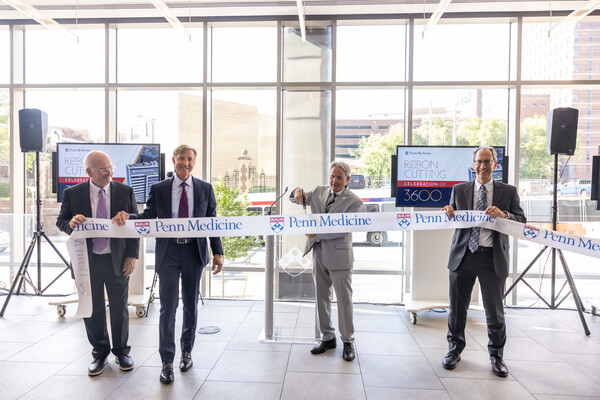
Image: Kindamorphic via Getty Images
When someone arrives at a hospital with a severe injury, the law guarantees that person will receive care. But how will recovery progress when it’s time for that person to go home?
“How often, when we discharge patients, do we think about the environment they’re going back into and take that into consideration?” says Therese Richmond, the Andrea B. Laporte Professor of Nursing and associate dean for research and innovation at Penn’s School of Nursing. “We need to start thinking beyond the hospital doors.”
For research recently published in the Journal of Racial and Ethnic Health Disparities, Richmond, recent Penn Ph.D. graduate Marta Bruce, and colleagues from Penn Nursing and the Perelman School of Medicine looked at how environmental factors might affect the healing process for Black men who had suffered traumatic injuries.
Following such individuals for up to four months post-discharge, they found that where these people lived affected how likely they were to experience depression or PTSD as they recovered. What’s more, factors like a neighborhood’s crime rate, disconnectedness, disadvantage, and racial and ethnic makeup influenced symptom severity.
“A lot of research has focused on finding explanations for poor health outcomes in the individual, at the genetic or molecular level,” says Bruce, who, until recently, worked as an intensive care nurse at the Hospital of the University of Pennsylvania. “We’re trying to move beyond that. People live complex lives, and we think their health outcomes can be better explained by where they live and the conditions they’re exposed to.”
This work is the next step in a study funded by the National Institutes of Health that involved more than 600 Black men who had been seriously injured, either intentionally or accidentally. This particular study included 451 adult Black males residing in Philadelphia who were hospitalized for traumatic injury.
Richmond and colleagues had previously found that this population—which, in the United States, is disproportionately affected by such injuries—is at significant risk of experiencing psychological symptoms during recovery. The research team also learned that an individual’s perception of the injury-recovery environment matters, too, explicitly regarding safety and availability of resources.
Bruce wanted to take this work a step further. “It was important to me to challenge that biological essentialism, to look at the context of people’s lives, the conditions that they’re surviving, and how that might affect their injury recovery,” she says. In other words, what happens when they return from a hospital stay for a traumatic injury to an environment not conducive to health and well-being?
The researchers decided to study U.S. Census Bureau block groups, areas larger than single blocks, but smaller than census tracts, ZIP codes, or counties. They’re akin to neighborhoods, Richmond says. Within each, the researchers geo-coded demographics like income and education, crime data, vacant lots that had been greened, plus health, consumer spending, and more. Rather than require an official diagnosis of depression or post-traumatic stress disorder, the researchers instead focused on the spectrum of symptoms for these conditions.
“What emerged were these four constructs: neighborhood disconnectedness or the extent to which you know your neighbors and you feel part of a community; concentrated disadvantage or deprivation; crime, violence, and vacancy, or more broadly, the presence of crime in your neighborhood; and neighborhood race and ethnicity,” Bruce says.
Living in a place with high neighborhood disconnectedness, they found, was associated with higher depressive symptoms. Crime, violence, and vacancy in the neighborhood were associated with symptoms of PTSD. Intentional injury was associated with symptoms of both conditions, as was having Medicaid or no health insurance.
“These findings are important because they show that where you live does impact recovery,” Bruce says. “It does impact your symptom severity for these disabling conditions.”
Beyond the clinical implications, which point to prioritizing these discussions during the discharge-planning process, the researchers say there are policymaking implications, too. Specifically, the findings indicate a need for more resources—health-promoting and otherwise—in historically and currently underserved neighborhoods. “We have to think about the environment and invest in the environment if we want people to optimally recover,” Richmond says. “We have to think about what happens to people when they go home.”
Funding for this research came from the National Institute of Nursing Research of the National Institutes of Health (Grant R01NR013503), Office of Nursing Research at the University of Pennsylvania School of Nursing, and Hillman Scholars in Nursing Innovation.
Therese S. Richmond is the Andrea B. Laporte Professor of Nursing and associate dean for research and innovation at the University of Pennsylvania School of Nursing. She is also a professor of nursing in surgery at the Perelman School of Medicine, a senior fellow at Penn’s Leonard Davis Institute of Health Economics, and research director of the Penn Injury Science Center, which she co-founded.
Marta Bruce received her doctorate from the University of Pennsylvania School of Nursing in 2021. Until recently, she was an intensive care unit nurse at the Hospital of the University of Pennsylvania.
Other co-authors on the paper include Penn Nursing’s Andrew J. Robinson and the Perelman School of Medicine’s Justine Shults and Douglas J. Wiebe.
Michele W. Berger

Image: Kindamorphic via Getty Images

nocred

nocred

(From left) Kevin B. Mahoney, chief executive officer of the University of Pennsylvania Health System; Penn President J. Larry Jameson; Jonathan A. Epstein, dean of the Perelman School of Medicine (PSOM); and E. Michael Ostap, senior vice dean and chief scientific officer at PSOM, at the ribbon cutting at 3600 Civic Center Boulevard.
nocred